Home to the highest tides in the world, the Bay of Fundy has a spectacular New Brunswick shoreline and a drive through its forests, raging capes and isolated coves may reward with a glimpse of whales.
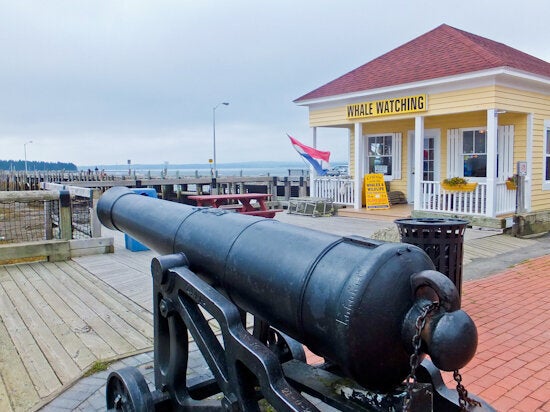
Hopewell Rocks
I leave the pleasant city of Monkton and follow the Petitcodiac River south to the sea and my first destination. The Hopewell Rocks rise up from the sea bed of the Bay of Fundy, like giant flower pots, and the tides here vary from 10-14 m, with 160 billion litres of water in transit every day. Fortunately, I'm within the 7 hour time window when it's safe to walk on the beach so I grab the chance to get close to these extraordinary formations. Over millions of years, layers of sand, mud and stones were compressed into solid sandstone and the shapes we see today are the result of tidal forces wearing away the base of the rocks.
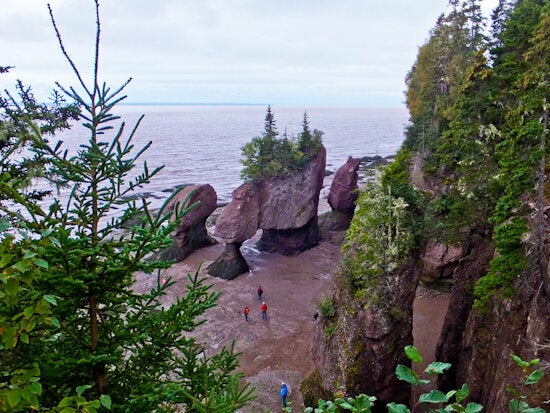
The rocks tower 20 m above me and I don't want to get to close as, when the base gets thin enough, they can topple in an explosion of crumbling stone. I can see the tide advancing and, suddenly there are uniformed officials getting everyone off the beach. There's a well laid out interpretive centre which explains everything about the bay and geology and also does lunch. By the time I leave, it's almost high tide and the rocks are like islands peeking out of the sea.
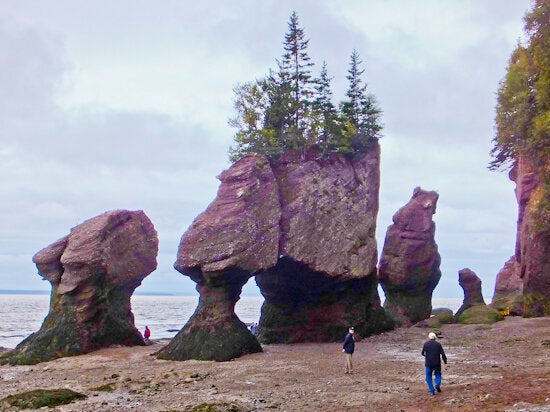
Cape Enrage
It's now beginning to rain quite heavily and the mist swirls around me as I turn off the main road and make my way towards the lighthouse at Cape Enrage, built in 1848 astride 48 m cliffs. It's still in use today and I can hear its fog horn sounding warnings to anyone daft enough to be out on the sea. The panoramic view of the entire bay from Apple River to Dorchester to Quaco is meant to be one of the best in Canada but today I'm sadly disappointed. In better weather you can tour the lighthouse, explore the fossils on the beach and take a 600 foot zipline, but I settle for a bowl of warming chowder in the restaurant.
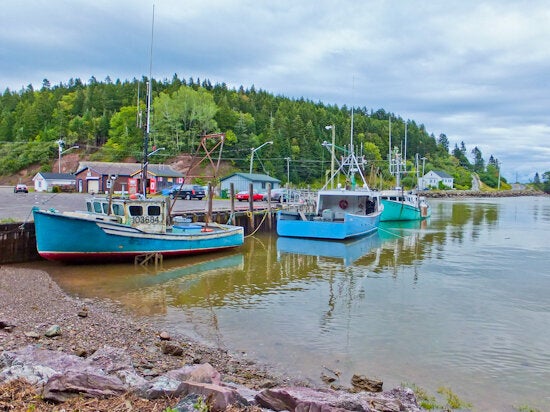
St. Martins
I'm still battling the elements when my GPS sends me off on a mad diversion on a logging track. I'm thinking it might be a short cut but the surface goes from bad to worse and I begin to think I'm going to wreck the car. I make a U turn and join the safety of the road and soon the sun has come out and I'm in the clapboard village of St. Martins. Colourful fishing boats are bobbing in the water, overlooked by a lighthouse and 2 covered bridges. 10 km east is the newly opened Fundy Trail which runs along the coast to an interpretive centre at Big Salmon River. The Fundy Footpath starts here and you can walk to the boundaries of Fundy National Park, a total distance of 41 km, crossing a dozen ravines.
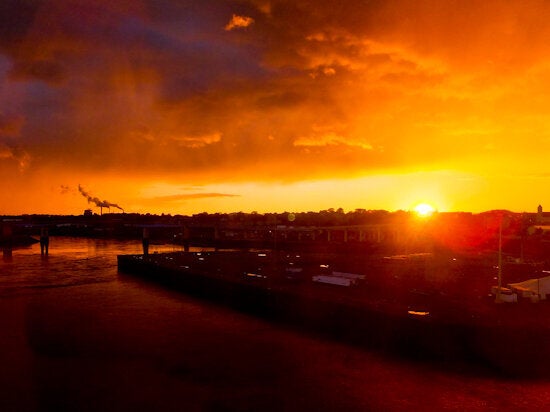
Saint John
Saint John is Canada's oldest incorporated city and the only one on the Bay of Fundy. It has a long history of shipbuilding and the excellent New Brunswick Museum is well worth a visit to get an overview of whaling here. Most of the city was burnt down in the great fire of 1877 but rebuilt in imposing Victorian style straight afterwards. It's actually very attractive and reminds me of a sort of Manchester on sea. The 1876 Saint John City Market is the oldest market in North America and its roof resembles an inverted ship's hull of a ship. Locals still buy their vegetables here but it's also a mecca for cruise passengers looking for souvenirs.
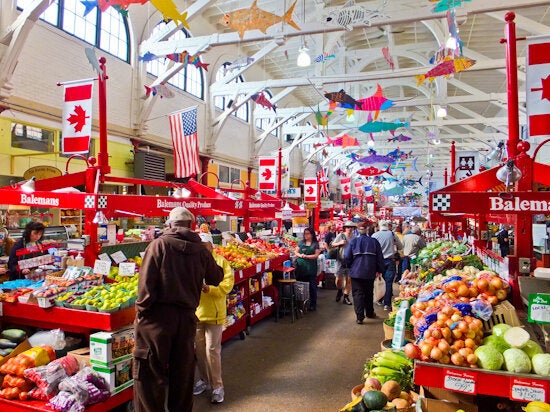
To see the power of the Fundy tides, I take a jet boat from the harbour, up the St. John River, to a narrow gorge, home to the so-called Reversing Falls. I'm carried along by the incoming ocean waters which are pushing the river water upstream. It really does appear that the river is flowing backwards and the rapids are created by a series of underwater ledges which roll the water in either direction. Small whirlpools at the base of the railway bridge make navigation treacherous and the jet boat captain does his best to serve up thrills, but fortunately no spills. Everyone gets soaked.
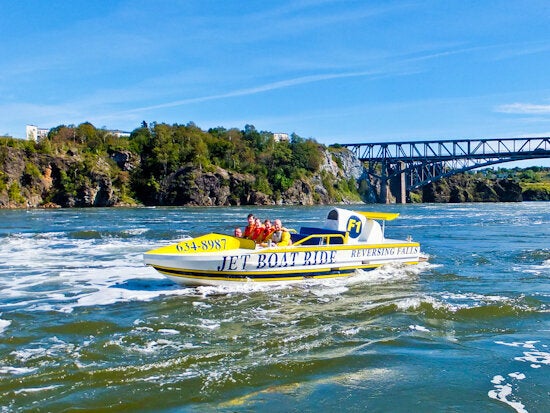
St. Andrews
St. Andrews, or St. Andrews by-the-Sea as it is often called, was Canada's first seaside resort when the Algonquin hotel was built in 1889. The massive mock Tudor structure still overlooks the town, and it's presently undergoing refurbishment. In its heyday, tourists came here by rail to escape humid North American cities.
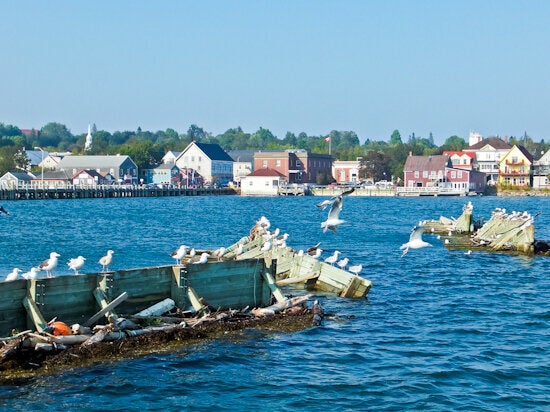
The builder of the Canadian Pacific Railway, William Van Horne, liked the place so much that he built a house just off the coast on Ministers Island and had his groceries brought in by train. It's just an empty shell now but well worth crossing the causeway at low tide to visit. In the grounds you can still see the original carbide machinery which was used to generate acetylene gas for the lights.
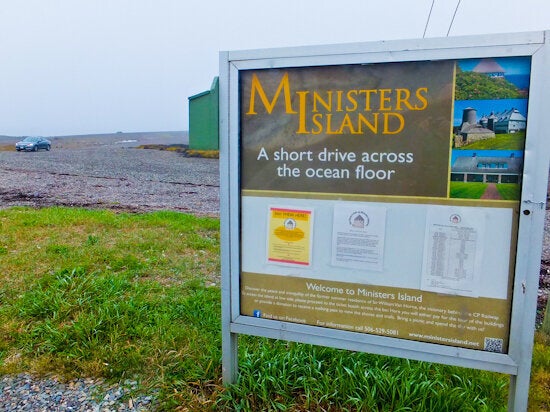
I'm nearly at the end of my trip but realise I haven't seen any whales, even though the months from June to October are peak season. It's a foggy morning as I climb aboard the sailboat Jolly Breeze and set off into the mist. It's about an hour to the rich feeding grounds in the middle of the Bay of Fundy where the whales gather. Soon the sun begins to break through and there's suddenly a Minke to starboard. It doesn't stop there and I see at least 5 Fin Whales - actually you hear them before you see them since, when they surface, they expel a noisy jet of water out of their blow hole. 2 of these marvelous creatures swim right past and dive under our boat. Now I truly can say I've shouted "There she blows" on the Bay of Fundy.
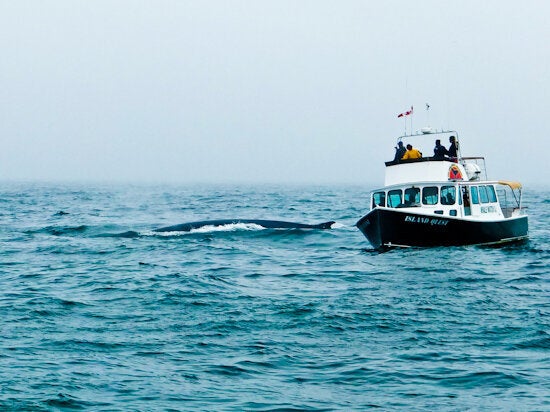
Sleep and Eat
Monkton: Marriot Residence Inn is central.
Tide and Boar has good beer and food.
Saint John: Hilton Saint John has spectacular views over the harbour.
Saint John Alehouse is just a stroll up the street.
Urban Deli is an excellent lunch spot.
St. Andrews: Rossmount Inn is a stunning Victorian residence with gourmet food.
Europa Inn is in the centre of town and has an excellent German chef.
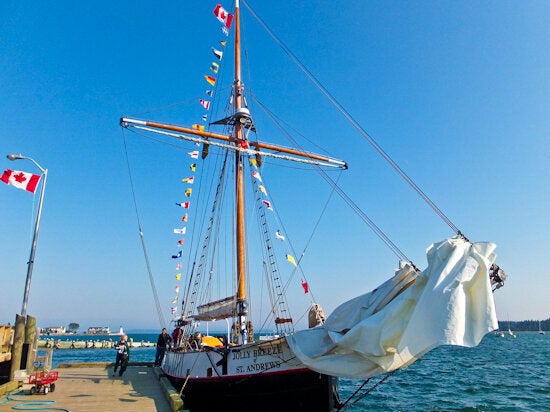
Bay of Fundy has information about the region.
Tourism New Brunswick is useful for planning your trip.
Keep Exploring has information about Canada.
Air Canada flies to Monkton and Fredericton.
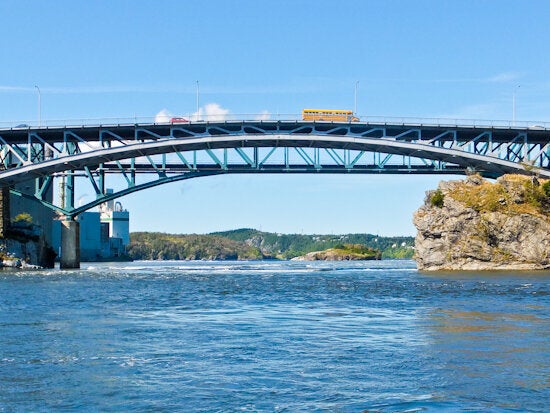
All pictures copyright Rupert Parker
